Resilience Planning
We identify challenges and opportunities for each project, proposing resilient systems to mitigate risk from flooding, wildfires, earthquakes, extreme heat or cold, hurricanes or tornadoes
 Sasaki
Sasaki
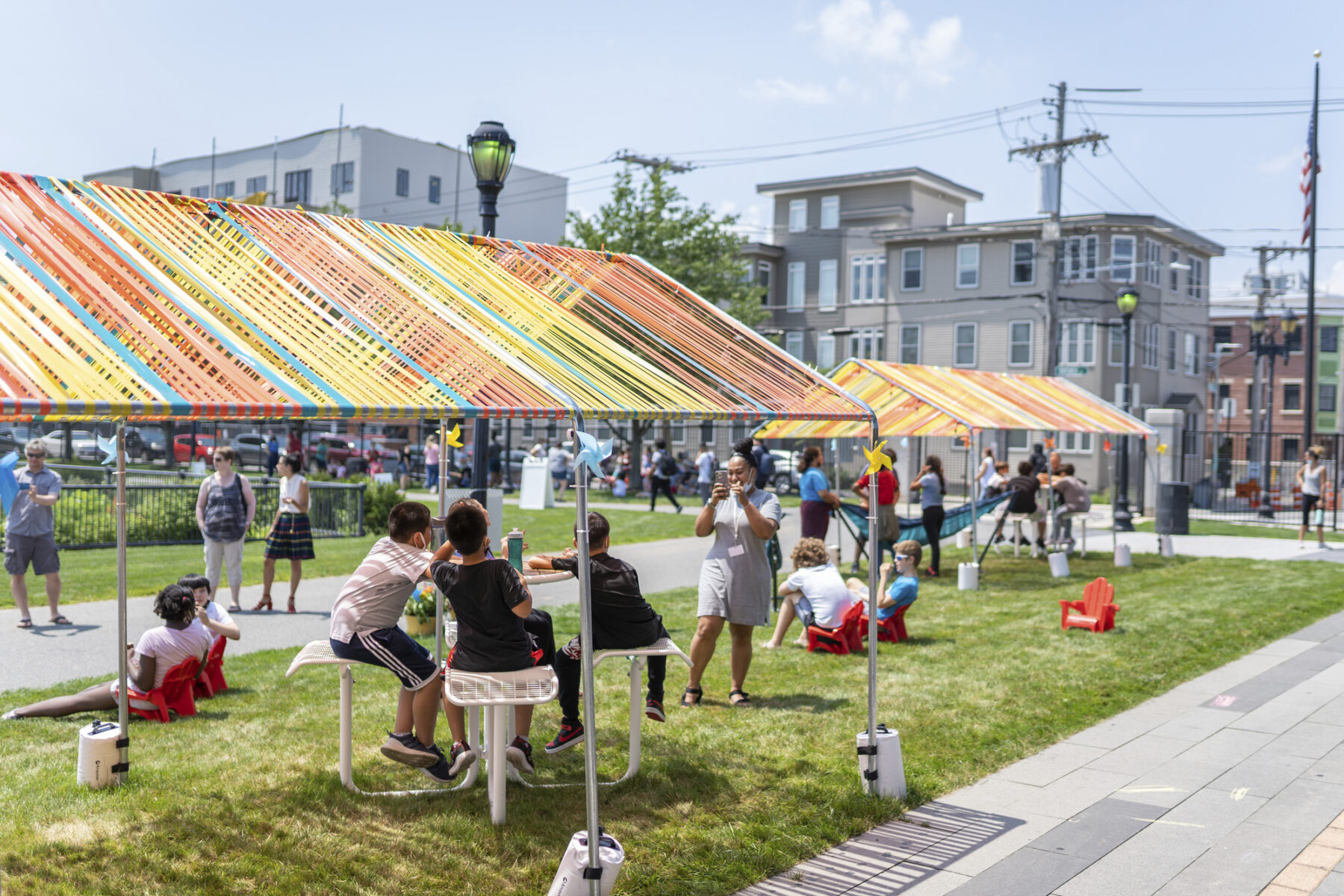
Throughout the summer of 2021, Sasaki-designed “Cool Spots” which were set up outside of library branches for neighborhood heat relief.
As a part of the Climate Ready Boston initiative, Sasaki collaborated with the City of Boston to tackle climate challenges at a citywide scale with a focus on overburdened communities. This is the first citywide heat plan for Boston. Through a people-centered, multilingual approach, this study ensures that as city temperatures rise, so does Boston’s heat resilience.
While rising temperatures resulting from climate change is a ubiquitous issue, its effects are not felt equally. Providing equitable heat mitigation requires tactics which prioritize overburdened residents, guaranteeing equal opportunity to seek relief. The project coupled in-person charrettes and digital platforms to maximize community reach for qualitative data collection. Information gathered was then harnessed to test cooling and heat mitigation strategies that address future impacts of extreme heat and increase citywide resilience.
Historically underserved neighborhoods with predominantly low-income, non-white populations experience the increasing effects of climate change at a disproportionate rate, especially as it pertains to heat. The updated Heat Plan identified the “Hot Five” communities—Roxbury, Dorchester, Mattapan, East Boston, Chinatown—which reported the highest temperatures and have endured under-investment in critical infrastructure, redlining, and outdated mortgage lending policies for decades. While seemingly unrelated, proper planning and maintenance of the built environment is necessary to successfully mitigate the heat. Natural cooling features such as trees, accessible green space, and ratio of hardscape are all critical determinants of a neighborhood’s heat risk. Neglecting these features exacerbates the heat for those who are already disadvantaged due to age, income levels, disabilities, and more.
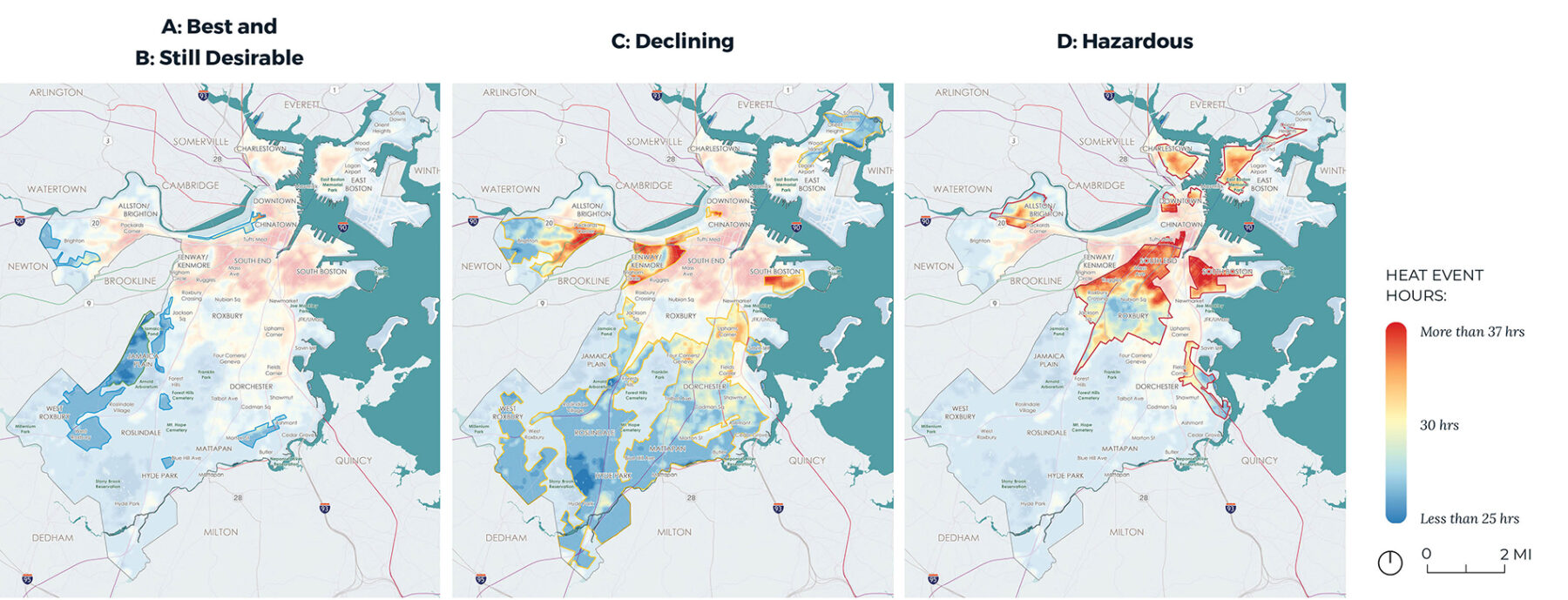
Many of Boston’s neighborhoods were redlined by lenders from as early as the 1930s. These areas experienced decades of underinvestment and are comparatively hotter places to live, work and go to school.
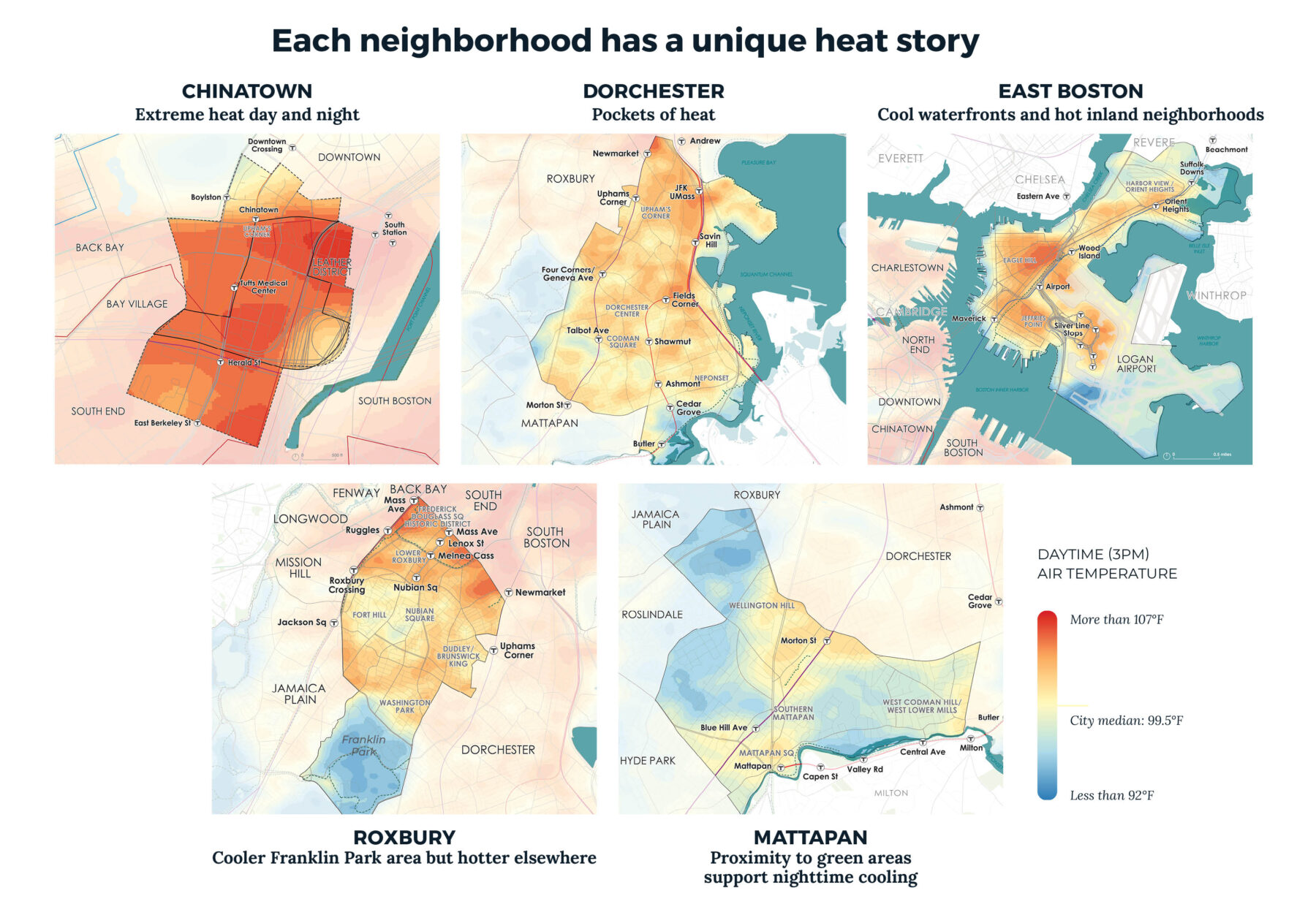
Despite only being miles away from each other, each neighborhood hosts contrasting heat terrains
The Heat Resilience Strategies study aims to address the causal relationship between outdated neighborhood planning, socioeconomic factors, and extreme heat. This required critical assessment of three heat risk factors: exposure to extreme heat, adaptive capacities to access cooling, and variable sensitivities to temperature changes (e.g. individual health and age). To address these factors, the study directly consulted residents of each neighborhood, ensuring that a more “Climate Ready Boston” encompasses all Bostonians.
The study leveraged online and in-person engagement strategies, prioritizing input from the five prioritized neighborhoods. To empower participants to share their stories, Sasaki partnered with the City to develop a custom engagement tool. Comic Builder, a participatory app, allowed users to create a personal avatar and design three scenes reflecting their personal experiences with heat. Due to historic racism in urban planning, Boston’s neighborhoods have very different exposures to heat. This tool builds empathy across neighborhood lines. Once completed, over 40 comics were compiled in the form of a virtual flipbook so participants had opportunities to share and learn from one another.
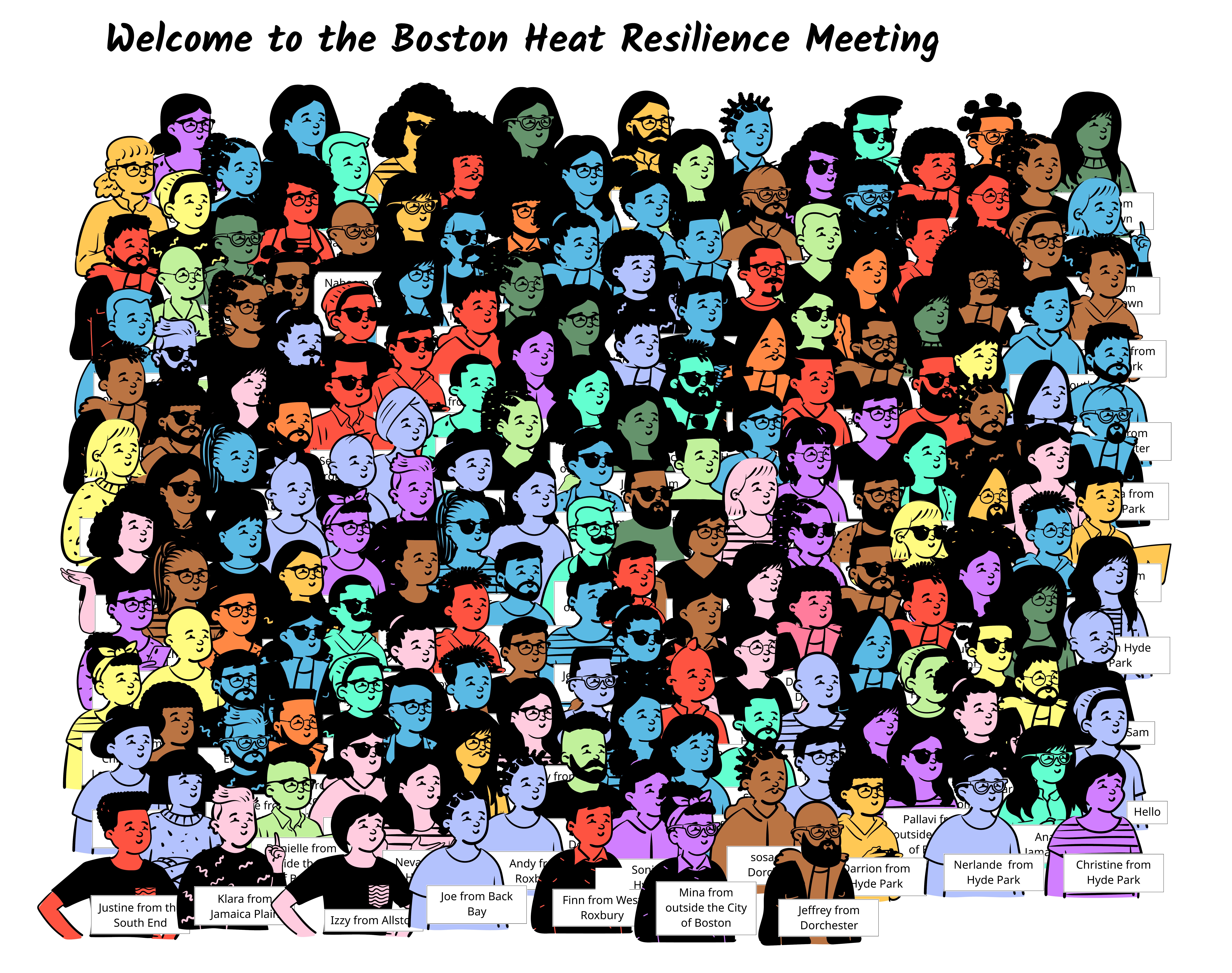
Comic Builder contributors had the opportunity to see a visual representation of diverse heat experiences.

For those who preferred offline participation avenues, in-person engagement activities like youth-led surveys gathered resident feedback to deepen understanding of the greater Boston heat experience. Additionally, Sasaki installed Cool Spots at the East Boston and Egleston Square branches of the Boston Public Library, sharing materials which redirected residents to heat relief resources, food, and other forms of social support. Temperature sensors, misters, and hammocks were installed to provide residents with immediate respite.
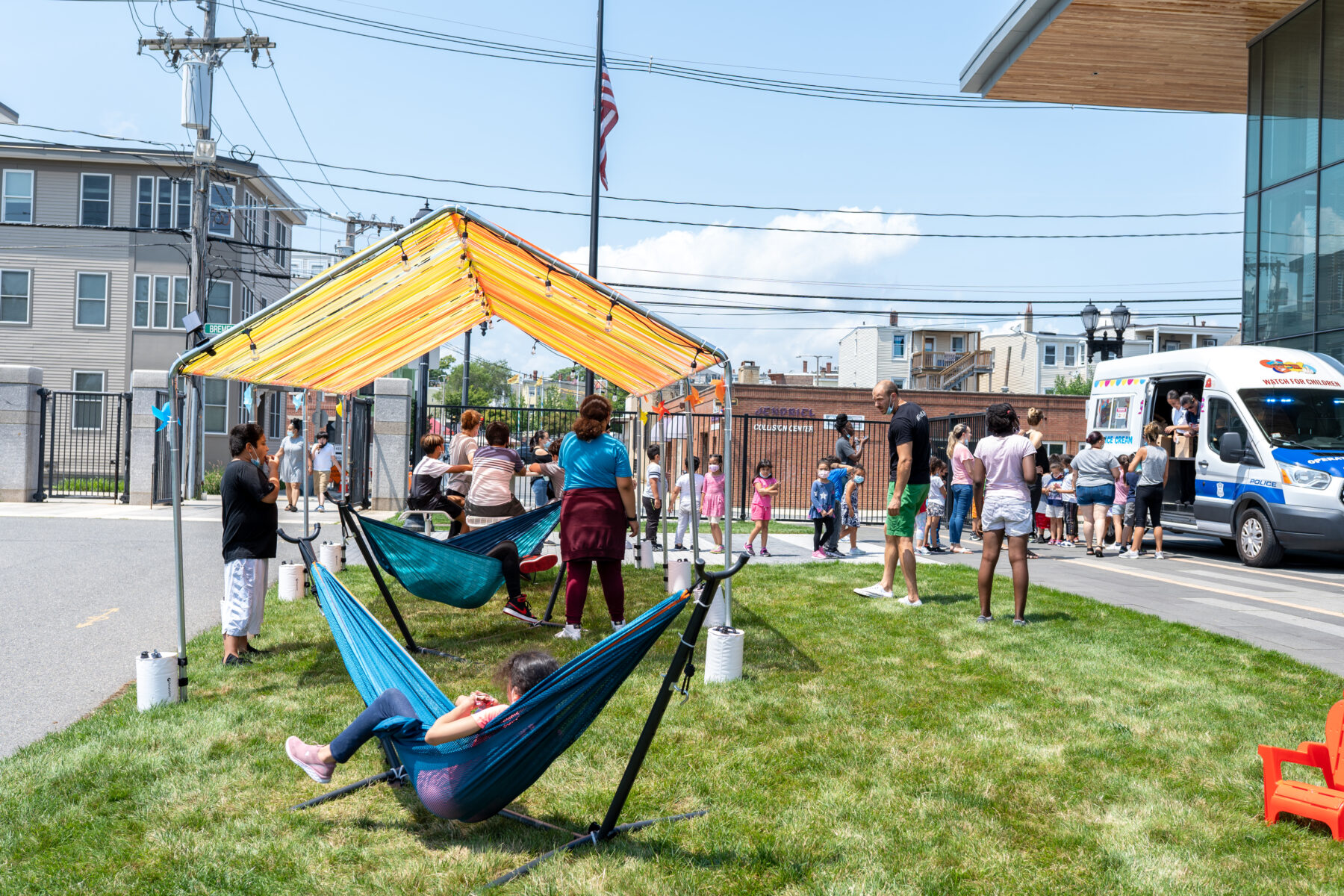
Cool Spot attendees relishing in misters, hammocks, and an ice cream truck

With outdoor heat relief, children are able to comfortably play outside
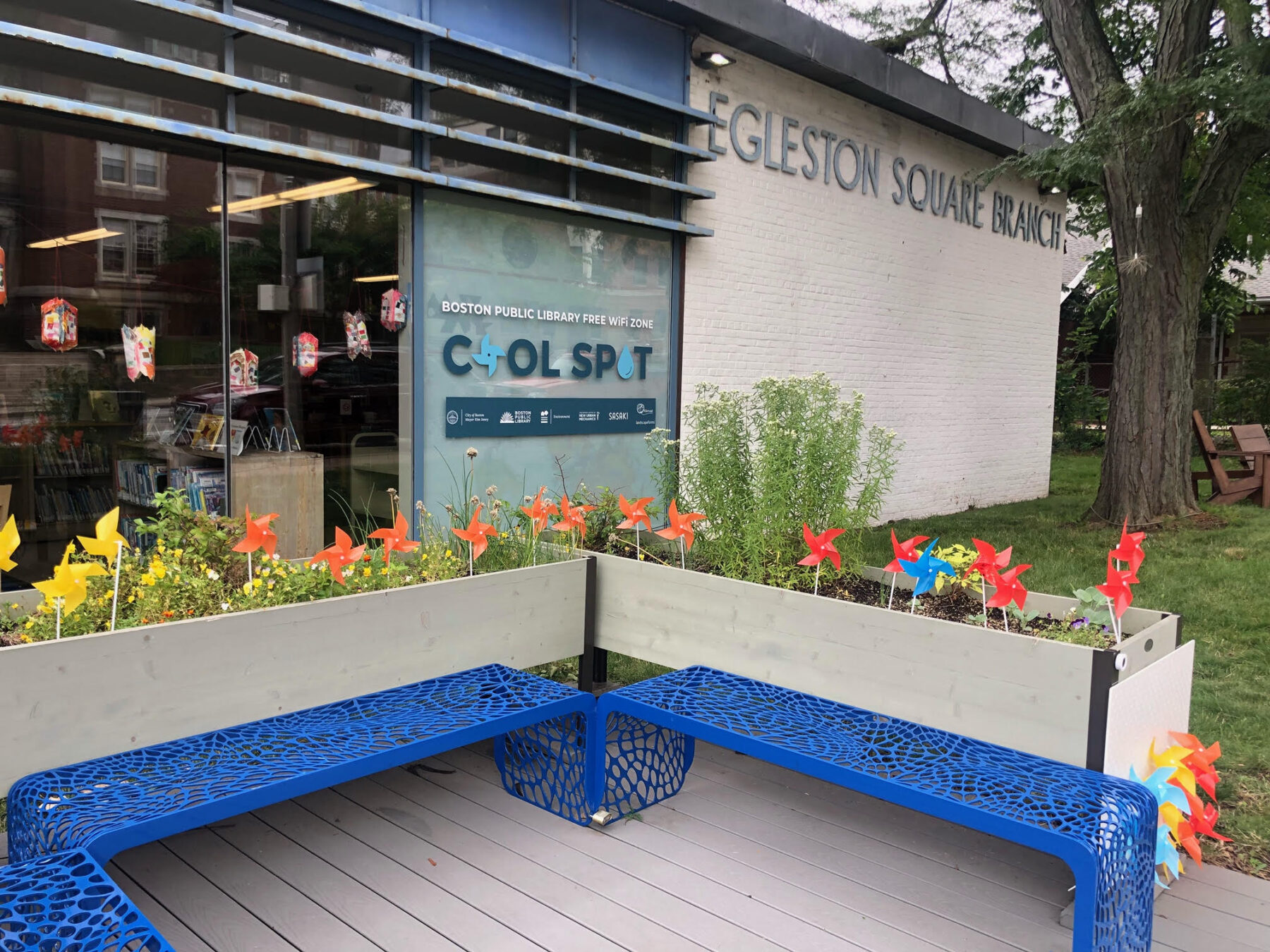
A glimpse of Egleston’s BPL Cool Spot
Cool Spot attendees relishing in misters, hammocks, and an ice cream truck
With outdoor heat relief, children are able to comfortably play outside
A glimpse of Egleston’s BPL Cool Spot
A two-pronged solution was developed following data collected by Sasaki: “Relief During Heat Waves” and “Cooler Communities.” These two strategies offer programs which envision a concurrent, long-term approach to strengthening Boston’s soft and hard infrastructure.
The Relief during Heat Waves strategy hones the networks of communication and social support to enhance neighborhood resilience. The Boston Extreme Temperatures Response Task will organize emergency alerts and responses for neighborhood residents and the City of Boston will distribute cooling resources through the Healthy Places Air Conditioner and Fan Delivery Pilot Program. Community leaders will also be appointed by the Environment Department to represent youth, small business, and outdoor worker cohorts. Furthermore, Public spaces like Boston Centers for Youth and Families and more branches of the Boston Public Library will continue to dedicate their spaces for city-run cooling centers and pop-up relief spots.
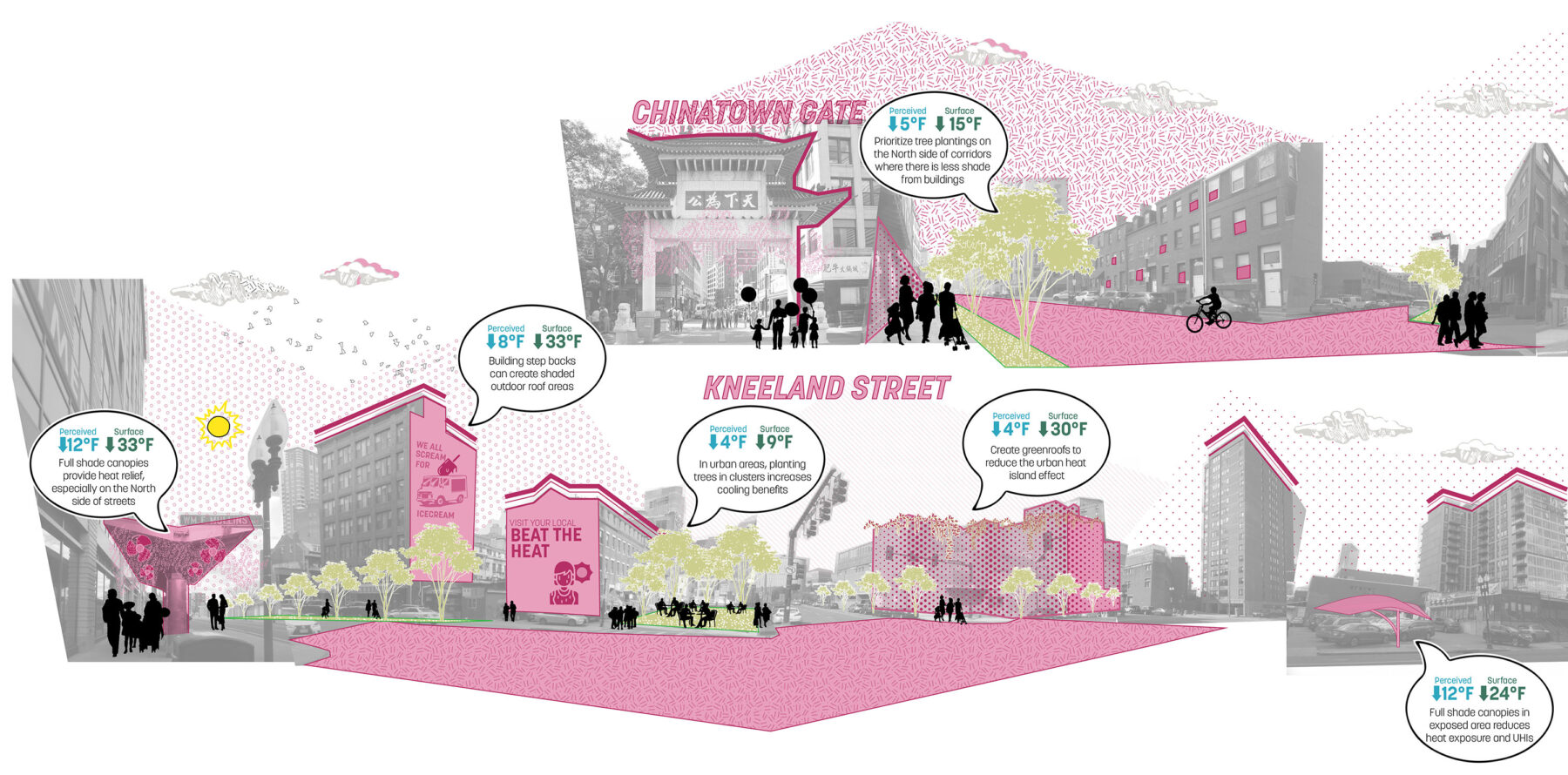
Cooling strategies and effects for Chinatown
Alternatively, the Cooler Communities strategy focuses on hard infrastructure solutions. It proposes building updates including white roofs to reflect solar radiation, green planted roofs to insulate and absorb rainwater, and solar roofs to generate renewable energy and shade. Increased green space will be integrated into existing roadways and public spaces for natural heat reduction. Additionally, the City’s Streets Cabinet—the Boston Transportation Department and the Public Works Department—will expand park systems, reduce blacktop roadways, and implement shaded bus shelters and benches. Moreover, the Resiliency Checklist will be updated in compliance with the Coastal Resilience Guidelines to ensure future development projects minimize adverse environmental impacts.
The results of the heat study will guide a justice oriented approach to resilience planning into the future. From pop-up cool spots to redefining heat resilience strategies, the City of Boston will ensure that both current and future generations can prosper in climate ready neighborhoods.
For more information contact Tamar Warburg.